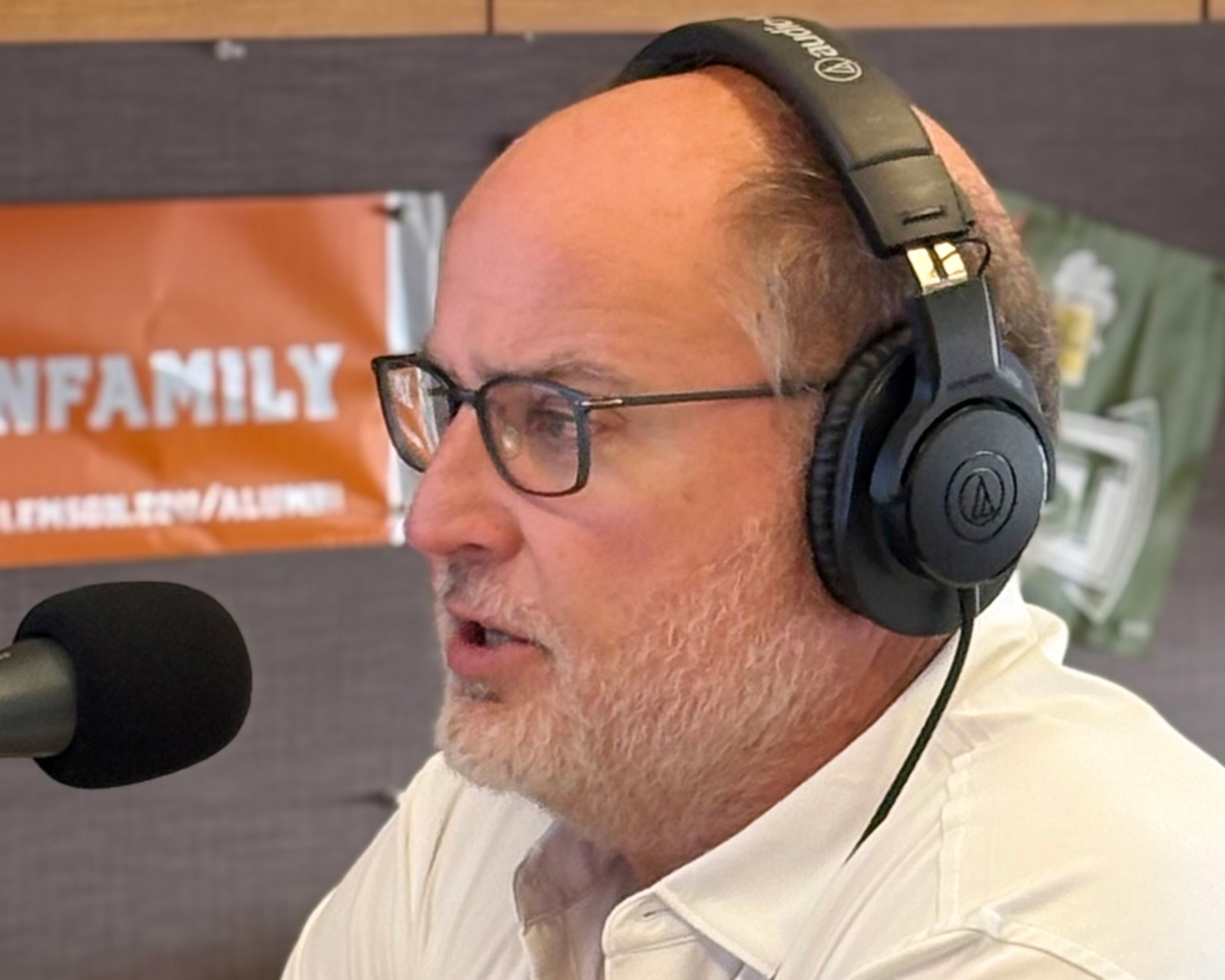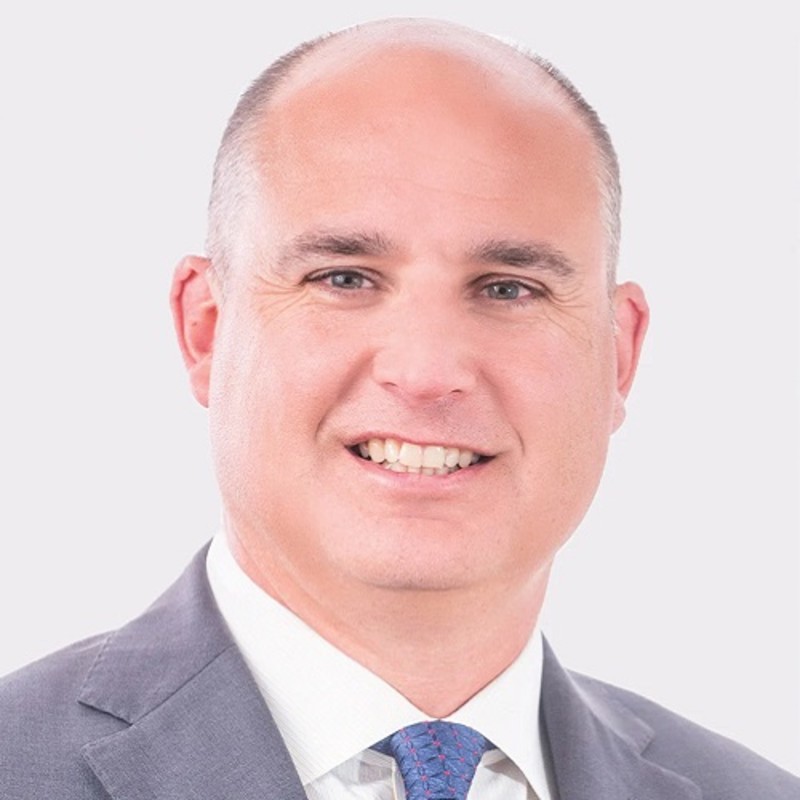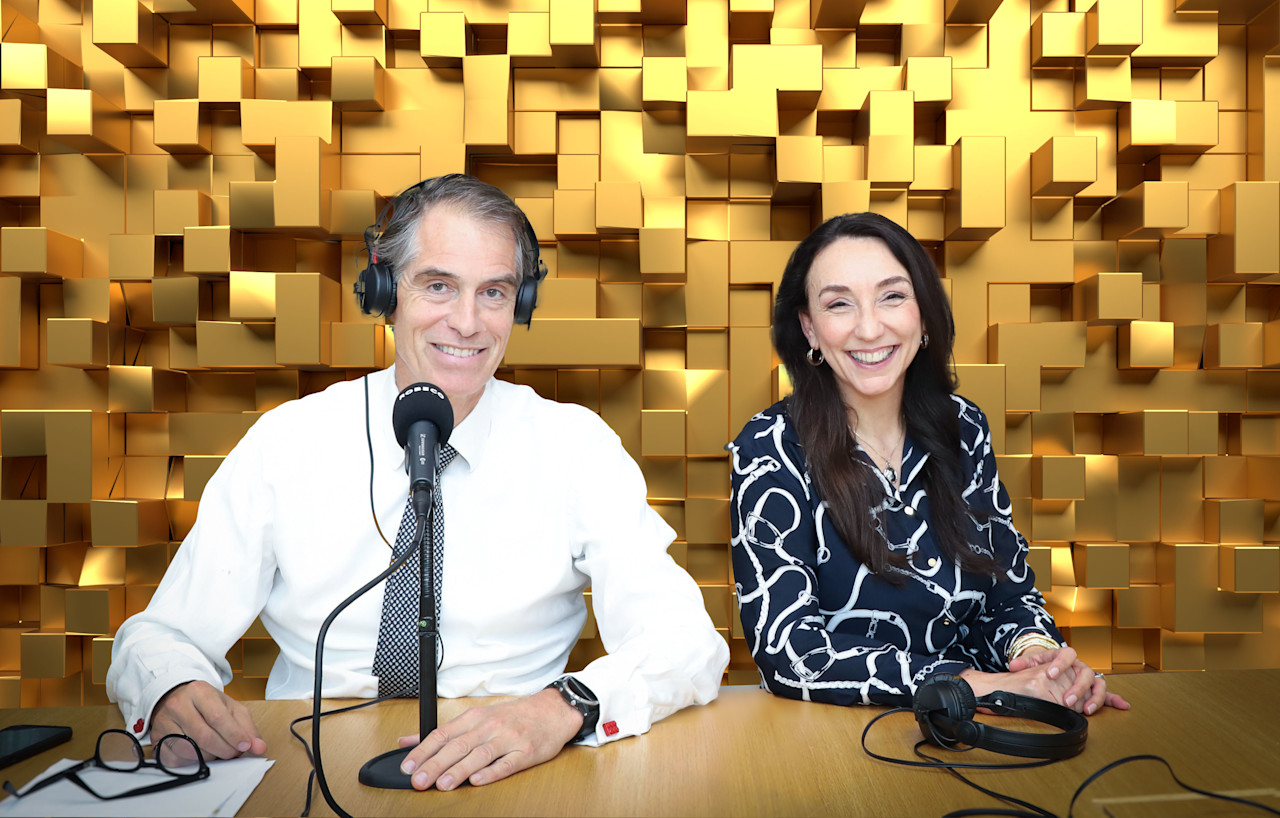


Podcast: The skeptical value investor
Growth stocks have outpaced value stocks over the past decade, with growth’s lead particularly clear in the US market. That’s the high-level perspective – which suggests that value investors have been left out in the cold in recent years. But have they. really? Chris Hart, portfolio manager at Boston Partners, discusses what it takes to invest successfully in a world of hype, hyperbole, and very limited forward visibility.
This podcast is for professional investors only.
Erika van der Merwe (EM): Growth stocks have outpaced value stocks over the past decade, with growth’s lead particularly clear in the US market. Over the last five years, while growth has maintained its edge in the US, value investing has shown better performance in several international markets. Well, that’s the high level perspective, which suggests that value investors have been left out in the cold in recent years. But have they?
Welcome to a new episode of the Robeco Podcast.
EM: Chris Hart is my guest to discuss these recent trends and what it takes to invest successfully in a world of hype, hyperbole, and very limited forward visibility. Chris is a portfolio manager at Boston Partners. Welcome, Chris. Really good to have you on the show.
Chris Hart (CH): Thank you for having me.
EM: So, Chris, as we all know, the market narrative over the past few years now has been heavily in favor of a very narrow group of stocks. There’s been this obsession with growth-y AI, and AI-related stocks. Has this left value investors out in the cold?
CH: Well, it’s interesting because the reality is no. Implementing a clear strategy that’s based upon stock picking, finding mispriced securities, could be very favorable and can result in performance characteristics that are quite similar to return characteristics that are driven by – as you describe – narrow markets such as the S&P. We could take, over the last five and a half years, the strategy has done extremely well. Interestingly, what surprised a lot of people is that, since the bottom of Covid, the strategy has outperformed the S&P. And that’s through superior stock picking.
What’s interesting is that when you look at what the return characteristics have been over the last five/five and a half years, the whole AI complex has been rather episodic. From the beginning of Covid through the announcement of AI, value actually was doing very well. If you looked at it, in a very granular basis, especially our style. Along comes AI, market becomes very narrow. And that narrative basically drove what you saw from a headlines perspective what you saw in the newspapers, all about AI.
Yet when you pull back the covers, there is a significant number of opportunities that have similar types of performance. I mean, Rheinmetall in the portfolio outperformed Nvidia. And it’s just as unique as Nvidia. No one three years ago was talking about Rheinmetall for the same reason before AI, Nvidia was a good chip company but no one would say that they predicted the success that they’ve had with generating or manufacturing chips that facilitate Large Language Models. So, in retro-, it’s easy for, as we say in the US, Monday morning quarterbacking, which is you critique everything ex-post.
Today to me it’s a very different environment, where the narrowness can create headlines. But once you pull those covers back and you scratch the surface, a stable strategy with no style drift that focuses again on mispriced, value-oriented or, say, mispriced companies that exhibit positive momentum and earnings growth – and if you could buy those companies at the right valuation, you achieve multiple expansion and then magically, the returns of those companies are just as strong as the top contributors in the various more core to growth-y indices that are in the marketplace.
EM: As a value investor, do you react with suspicion to all this hype around AI? There’s so much focus on these fantastically large capex budgets being announced by the companies, concerns that they’re not big enough or too big. How do you see that?
CH: Well, I’m somewhat of a very skeptical person to begin with, which is probably why I succeed at value investing. I look at it very skeptically. I think there’s a lot of terms being used that are not exactly I would say AI. AI is being used by every company that can try to say that they’re using it because it fits a narrative. I would say, it’s interesting if you watch sports, all of a sudden they come out with a comment of, “we’re going to be able to predict the next play,” which is very rudimentary. They can’t predict the next play. It’s random.
Large Language Models are different. Those probably have a much, let’s say, today no one really knows what they’re going to do. They’re present. They’ll be implemented in various businesses. But it’s interesting that when you talk to most companies, they can’t they can’t demonstrate or exhibit, a revenue model surrounding that. Now a name like Nvidia or the tangencies around Nvidia that make chips or make memory or basically create the servers that facilitate Large Language Models: they’re doing extremely well because the service providers, or the ones that were trying to use Large Language Models and AI as a business model are spending, upwards really over USD 800 [billion] to USD 1 trillion of spending on an ecosystem.
What’s actually really interesting is if you take a step back and you think about FAANG. It’s a very different proposition. The FAANG-oriented companies, especially the advertising-driven ones, were a zero sum game. They stole revenues from print media, from linear television. And they created a new ecosystem. But interestingly, those revenues were immediately recognized. It wasn’t revenues that were promised 10 to 15 years down the road.
AI not so much. Or Large Language Models. No one knows how it’s going to be used. But what we do know is that many of the companies that we speak with, how are you using it? There’s a legitimate marketplace for it. Digitization of company data. Using it for, I would say – the commentary that we mostly hear about is cost reduction and efficiency. But so far, most of it is not as utopian or wasn’t, as I would say, as robust as the market has been predicting.
And I think you’re seeing it somewhat over the last year. If you remove the Trump trade, I think the market is becoming somewhat more skeptical around it. It goes back to – I know that Nvidia is going to continue to make chips when I look out to ‘27-’28. Does that mean that they’re going to continue at that growth rate at that trajectory? Not quite sure. But those numbers are probably correct. But has as it matured? No one knows that. And when you look at the multiples associated with that cohort, or I would say that ecosystem of AI, it’s priced for absolute perfection and for something – I would say a market or just the world is unknowable in the future can be quite different from what you think it is today.
EM: Yes. Chris, perhaps briefly, in a related matter, I saw a chart this morning that shows that that over the first half of 2025, the contribution of US consumer spending to US GDP growth is now matched by the growth contribution of data center construction. I mean, would you have ever thought that’s possible? What does this mean? Is there a radical fundamental shift in the composition of the US economy, or is this just pointing to warning lights of a bubble?
CH: I think it’s flashing red with a bubble. Those numbers are unbelievable numbers. There are numbers that are – again, in retrospect, if you thought about this two years ago, you would have never thought that. It just shows the amount of capital expenditure that is being implemented to achieve any type of progress within the AI complex. Again, it includes Large Language Models, which I think are probably is probably the more robust technology versus just the generic AI.
But those numbers are crazy. If you think about the fixed capital investment that is being implemented to achieve within that AI complex, and then you have to factor in, okay, well, what’s an adequate return on that investment? That’s a lot of revenues that need to be generated. And I think it’s ripe for a bubble. It somewhat reminds me of, if you think about the renewable bubble, the themes that were associated with that: the whole entire renewable complex was priced for absolute perfection. And then 3 to 4 years later, you look at the actual IRRs of those businesses, and it’s dramatically different than what the market was pricing in, in the late teens in and around Covid.
Today, many, most renewable businesses are priced accordingly. The actual returns of those businesses became much clearer over the last two years in the multiples associated with those businesses have settled into reasonable pricing, which is interesting because we never chased the renewable complex. But you fast forward today in the portfolio has I would say much more – relative to 5 to 6 years ago, it has a number of names that were uninvestable for us from a multiple perspective. But today they are and they have positions and strategy.
So it’s about discipline, having skepticism and being very focused on valuation when making an investment and not being caught up in thematics. Because thematics will often be priced for absolute perfection in many situations and circumstances, priced as a bubble.
EM: Chris, you refer to the Trump trade. President Trump has upended many of the rules of global economic relations. How have you adjusted your strategy as a result, and if at all? Because judging by what you’ve said now, it’s about focus and discipline and no style drift.
CH: It’s interesting because on Liberation Day, we were sitting in the trading room listening to it, and it dawned on me. I’ve kind of been saying this to many of the clients: hyperbole works in politics, but it doesn’t work in economics. And, you look at the economic reality, you look at the real numbers surrounding the various tariffs and protectionist actions around the world prior to Liberation Day. And the fact was, it’s interesting, the fact was, is that the US average tariff rate was 2.5. Europe was 11. I think the market was expecting a reciprocal tariff to the US saying to Europe, okay, ‘we’ll meet you at 11%, or we can work together and keep it lower.’
And, as that speech went further on, it became glaringly evident it wasn’t about reciprocal tariffs. It was about altering trade deficits. And when we started to see the policies start to emanate, we kind of looked at it and said, ‘well, that’s not really economically viable.’ If you remember, there’s one member of the administration talked about, cell phones being built in the US, and that’s not happening. It gets down to even almost, I would say, laughable commentary about bananas and coffee.
The US doesn’t have the environment or the topography to grow bananas or coffee. So you got to these hyperboles that just didn’t make any sense. And I think you could see the rationale, how this has kind of developed over the last 3 to 4 months, because initially it was like 800 billion to 1 trillion in tariffs. That’s now 2 to 300 billion. In some ways you can say that Trump’s hand has been burned. Now, whether or not he really thought it was going to be 2 to 300 billion, and it was just a negotiation ploy that could that could be a valid argument or observation.
But based upon what the numbers were back in April and May, it’s now vastly different. And the reality of it is, too, is that it’s really a zero sum game for the economy and the consumer. Someone has to pay for those tariffs, whether it’s the consumer, whether or not it’s the manufacturer, OEM, a distributor. Someone ends up paying. So to me it really is a tax and really too for someone who’s on the other side of that tariff.
For tariffs to work, you really need a substitute. And perfect substitutes are really limited in the world, especially because of supply chains, because of how production manufacturing works. So, I think the economic realities came into play after that initial April/May timeframe. If you looked at some of the data, there’s significant loopholes. We’re going to do this tax, then you find out, well, okay, it’s supposed to be 15%, but the effective rate is really 6% because they had to implement a bunch of loopholes to get around supply chain issues. And that’s the way we thought about it, is that we were really looking at what’s the real economic reality. We took advantage of positioning the portfolio.
Actually, it’s interesting: we’ve increased our US technology exposure, doubled that exposure, because initially the thought was all technology chips and such being exported or imported into the US from especially from Southeast Asia from the contract manufacturing perspective was going to be heavily taxed. And it turns out, well, maybe not. We did the same thing with some government IT in the US. Same idea. Doge was valid. But to which extent? I mean, it wasn’t going to zero. So we looked at the companies that overreacted and the market, this is what happens is that the market overreacts.
And we took that as a great opportunity to increase our US exposure from an all-time low in the portfolio of around 30, 32%. Now we’re about 38%. I’d say the US market didn’t recover that quickly because we had a whole host of opportunities in the US that were that we were looking at the right valuation multiple. Unfortunately, those names never reached that target multiple that we were looking for. Again, disciplined. We’re not going to chase it just because it was slightly cheaper. We needed to buy those opportunities at multiples that made sense to us and offered upside to target, or more importantly, really what I talk about is a multiple expansion and so it never reach those levels.
EM: Chris, you’ve not touched on some of the sectoral, thematic and even regional opportunities that you saw that could follow in the wake of the tariff announcements. A bigger picture: what are the macro scenarios that you’re working with? The implications, for example, of tariff policy, but also US fiscal policy, monetary policy, the implications of all of this for US growth, US inflation, and perhaps even related to that the reliability of US economic data because this is also coming to the fore. So what is it that you’re working with? What is the information you can rely on and then act upon?
CH: Yes. As I said earlier, I’m a relatively skeptical individual, so I never truly ever believed any government statistics. I think obviously being able to predict GDP down to a 10th of a basis point and unemployment – it’s all about surveys. Surveys tend to be very relative. So I don’t put a heavy focus on quarterly or monthly data because there’s always a level of revisions. And obviously that’s what occurred several weeks ago when the president removed one of the individuals that was or, say, the person that was in charge of producing unemployment numbers.
That’s important though, too, is because you do need to have some confidence in that data. As politics has evolved in the US, I think it’s become more and more political. Job owning, threatening to – and it’s been on both sides of the aisle. It’s not just not one. It just became – there’s little more question marks. It’s become more, again, more hyperbole, I think. I think hyperbole should be the term for the, for the 2020s. Because again, it’s across both aisles and it’s very prevalent.
But that leads to the next issue: US fiscal policy. The latest budget doesn’t reduce spending. And in fact, it arguably increases the federal deficit. That eventually leads to crowding out. The thought obviously is through multiple economic policies that you’re able to offset the increase in the fiscal deficit through higher tax revenues, which was one of the points of the tariff situation. But you kind of wrap this all together and it doesn’t really move the needle one way or the other.
But slightly lower US interest rates: I think the biggest issue that it drives is one, they’re trying to lower the interest tax, the interest payment burden on the US government as that, on higher rates, as lower rate, treasury bills and or bonds mature. They’re being refinanced, obviously at a higher interest rate, which puts more pressure on the fiscal deficit. So they’re trying to really lower interest rates to lower the interest burden on the US government.
Lowering rates, though, I mean, it’s interesting. It again cuts down the data. If you lower the front end of the curve, there’s that that doesn’t necessarily mean the back of the end of the curve declines as well. You could have a steepening environment. A steepening environment would just mean that, actually it’s somewhat favorable for banks. You would result in the US government financing more of the deficit on the front end. But that’s short-term again.
So there’s a myriad of implications that are textbook. And as we’ve seen through the last 40 years, sometimes you could throw the textbook right out the window because what you expect to occur is not exactly what happens. What does it mean for the markets in the US? Lower 25 to 50 basis points of the front end of the curve? My gut tells me is that the market takes that as a positive, which results in, I would say, potential further mispricing of cash flows.
And where we’re at today in the US is, generally speaking, when you look at the valuation of the S&P, even if you remove Magnificent Seven, though that multiple is, punchy. But at the other side of it, it could be – once you lower interest rates, is the good news out there, and then the market trades off. I don’t know, I just default down to pure fundamentals, the underlying earnings growth of that business and the multiple.
Now the one area in the US where lower interest rates would be very beneficial as US housing in the lower end of the consumer. But even at that, there’s a new level. I think that interest rates in the US are structurally higher than they were in the teens. Remember the teens too which you ended up having? And it’s just not the US. ECB does it. Bank of Japan. It’s you know yield curve management. To me that’s not a free market. That’s manipulating a free market. And that creates a whole host of problems as well.
We could probably talk about stablecoins sometime in the future. But stablecoin offers creates all types of issues as well. so there’s a whole host of unknowables that are that’s facing the bigger financial system going forward. And as much as it is interest rates, it’s also other new products that could enter the marketplace.
EM: Chris, given all of that, you’re thinking around what’s happening in the markets and the broader themes. What’s your positioning currently by region and by sector? What’s truly exciting for you right now in terms of valuations and fundamentals?
CH: It’s still Europe, UK and Japan. As a point of reference, the strategy has been underweight US for most of the life of the strategy. There’s only been a probably a 2- to 3-year period that we were marketweight or close to market weight to US. Over the last 4 to 5 years we’ve been probably as underweight as we’ve ever been relative to the opportunity set. So our US exposure was somewhere down around 30%. And that really all comes down to valuation.
Valuation US is rather punchy. Full value. We could we continue to this day to find, very well-run European, UK, Japanese companies that trade at multiples that are very enticing relative to the underlying EPS growth rate of those businesses. If I was standing in outer space and I was throwing a dart at the world, and I was just looking at economic growth, it’s going to go to the US. But that doesn’t take into consideration valuation multiples.
So I always say I’m looking for trees and not the forest. The way indices are constructed also creates an underlying prejudice for or against particular regions as well. Obviously the European indices are much lower growth, slightly lower profitability levels relative to the US. But it’s also a construction issue. The US has Magnificent Seven at the top of the list. And those companies are from – or have been – those companies are essentially the most profitable companies in the world with a significant amount of market capitalization. So it distorts the opportunity set.
And running an unconstrained, all-cap portfolio, what we find a great advantage is being able to dip away and out of the index in finding off-index or opportunities that have strong underlying financial characteristics and valuation multiples. Just as strong outside the US, just as strong as they are inside the US. But you have to be very selective. You have to have great underlying analytical work behind it. Our 24 fundamental analysts do great work from that perspective.
EM: Yeah. So given that, what is your analysis throwing up where which sectors within Europe, UK and Japan are coming up tops?
CH: Yeah tops. today would be one as financials specifically banks. Non-US banks. I would say a year to year and a half ago, two to three years ago offered significant upside. Today they still offer upside. Obviously, they’ve had a great run. But when we look at the underlying valuation multiples, look at the underlying EPS growth, the returns on equity price to book. That is where we are significantly overweight. And these are spread lending banks. These are banks that make money by taking in deposits and lending very limited exposure to capital markets. Capital markets can be highly volatile.
And it’s interesting is that, there’s narratives that enter the market. European banks have done really well. So you have to sell them. Cynically, I go “Well, that’s funny because you don’t talk about selling technology companies that have done well.” So there’s this aspect that you get a gold star if you’re a technology company, but you don’t get a gold star if you’re not technology. And I think that theme is prevalent not only in the US, but is prevalent around the world. Many times that’s not supported by the underlying fundamentals of those of that commentary.
To me, the opportunities in financials, as I said, are specifically banks outside the US, targeted industrials. That’s a broad based group of companies. There’s a significant number of companies that make great widgets that have great margins, that sell their product around the world. and trade at very reasonable valuations, both in the UK, US, I mean, sorry, UK, Europe, Japan. Those are two of the bigger areas that we are overweight outside the US.
The one area that we are significantly underweight is the global consumer. Global consumer today I think there’s a very bifurcated – low end is interesting from a valuation perspective for companies that serve the low end. But there is minimal visibility into fundamentals and momentum. The high end: those are great companies, great momentum, great fundamentals. But trade at a valuation multiple that are full to reasonably valued. So that doesn’t meet my evaluation criteria when I think about investing. And we’re probably the lowest that we’ve been or lowest exposure that we’ve had to the global consumer since the inception of the of the strategy.
EM: Interesting. Now, Chris, drawing to a close, your strategy launched in 2008. Since then markets have faced one shock after another. I mean almost immediately. So many investors have floundered over this period, including value investors. What’s been for you the key to survival and success in running a value strategy?
CH: I think having a very grounded and rooted style and investment philosophy. It matters. My background is high yield for ten years at a prior firm. And high yield is a very interesting marketplace. And the skill set learned there is very applicable to value investing because in high yield, if cash flow is not being generated, you’re not going to get paid back. And it was very binary.
And taking that mentality and applying it to an equity market is very powerful. Because it allows you to focus on and find companies where there’s an exceptional amount of skepticism around it. Because that’s what I’m really buying, is I’m buying skepticism and not deviating away from the concept of the valuation multiple relative to the underlying cash flow generation and growth of the business. That’s an investment style.
And consistently applying that and not chasing thematics, not chasing the hot dot or what is working this particular quarter or 2 to 3 quarters. It’s a marathon, not a race. If I had to come up with the classic metaphor, it’s just discipline. And “it’s different this time?” It’s never different. Investing is about return on capital.
EM: Chris, thank you so much for opening the door to us, allowing us into your world, into your realm, sharing your thinking, your frameworks, and also your thoughts on the future. Good talking to you.
CH: Thank you very much.
EM: And thank you to listeners. If you’ve enjoyed this episode, please subscribe and share the podcast link within your network. Stay tuned for more market perspectives in our next episode. This podcast is available on all major podcast platforms and on the Robeco website. Until next time.
Thanks for joining this Robeco podcast. Please tune in next time as well. Important information. This publication is intended for professional investors. The podcast was brought to you by Robeco and in the US by Robeco Institutional Asset Management, US, Inc., a Delaware corporation, as well as an investment advisor registered with the US Securities and Exchange Commission. Robeco Institutional Asset Management US is a wholly owned subsidiary of ORIX Corporation Europe NV, a Dutch investment management firm located in Rotterdam, The Netherlands. Robeco Institutional Asset Management B.V. has a license as manager of UCITS and AIFs for the Netherlands Authority for the Financial Markets in Amsterdam.
Available on


Tune in now – Robeco podcasts
Important information
This information is for informational purposes only and should not be construed as an offer to sell or an invitation to buy any securities or products, nor as investment advice or recommendation. The contents of this document have not been reviewed by the Monetary Authority of Singapore (“MAS”). Robeco Singapore Private Limited holds a capital markets services license for fund management issued by the MAS and is subject to certain clientele restrictions under such license. An investment will involve a high degree of risk, and you should consider carefully whether an investment is suitable for you.




















